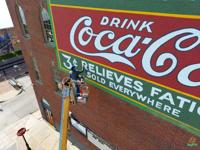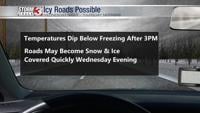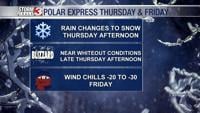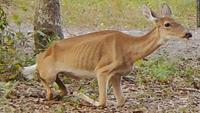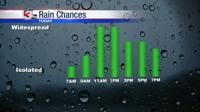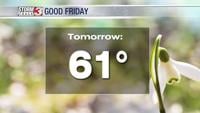
SUNFIELD, Il (WSIL) -- From the Tri-State Tornado in 1925 to the Marion Tornado in 1982. More recently, Harrisburg in 2012 and Perryville in 2017.
It's no secret that southern Illinois has a long history with violent weather, but the strongest tornado rated in the area over the last 70 years, is one that received very little press at the time and was overshadowed by other tornadoes with higher loss of life.
An F-5 tornado, it's the strongest storm on the planet.
"They're very rare," said meteorologist Rick Shanklin with the National Weather Service. "Only 62 in all those years."
Only 62 F-5/EF-5 tornadoes have occurred around the globe since 1950. Only 2 in Illinois.
"Wherever it went, there was nothing left," explained Bud Mills when thinking about that day. "When it went through a barbed wire fence or a woven wire fence, it blew the fence and the fence posts away. Nothing hardly left but bare ground."
Mills, now in his 80s, remembers December 18, 1957 very well. He had been duck hunting on the Du Quoin City Lake, excited to break in a new shotgun. A mild, stormy morning did not make for great hunting, so Mills decided to pack up when he saw dark clouds moving in from the southwest.
"When I got in my car and looked up there, there was cars up in the air flying around and that storm was straight up and down and looked like was stuff was splashing out from it," said Mills. "Debris was going out like this at an angle."
Crossing where Highway 51 intersects Route 154, back then, known as the "Sunfield Y", a large tornado was picking up everything in its path.
"I think that Tea Cup Inn, when it was built, had living quarters above it, so it was a two story building. There was nothing there after the storm," explained Mills.
The strong twister, which killed at least one person, was rated an F-5, something the region has not seen since, though Shanklin says several tornadoes have been considered.
"The Perryville Tornado in 2017, there were a couple of structures there that were not only leveled, and you can see that with an EF-4, but the debris was carried some distance. But in the end, we obviously didn't think it met that criteria," said Shanklin.
Since 1957, a lot of research has gone into tornado damage and how to rate it. The Fujita Scale has been retired and replaced with the Enhanced Fujita Scale.
"There's a lot that's gone on with the damage indicators and the testing of some of those damage indicators to ensure we're as accurate as we can be," explained Shanklin, who has surveyed countless tornadoes.
The F-5/EF-5 rating is not one that is given on just any strong tornado. Homes and businesses not only have to be leveled, but debris must be carried long distances.
"We're dependent on the structures we see," explained Shanklin. "Typically, it's a home or business or something like that, that is going to allow us to rate it at the EF-5 level and it's going to have to be something that's constructed well."
Today, there's no evidence of the tornado left, the highway no longer even makes a "Y", but it'something Mills will never forget.
The December 18, 1957 outbreak is one of the worst to hit southern Illinois. Murphysboro was hit by a tornado just 32 years after the Tri-State Tornado destroyed the city. Carbondale, Mt. Vernon, and Dahlgren also sustained damage from tornadoes.




